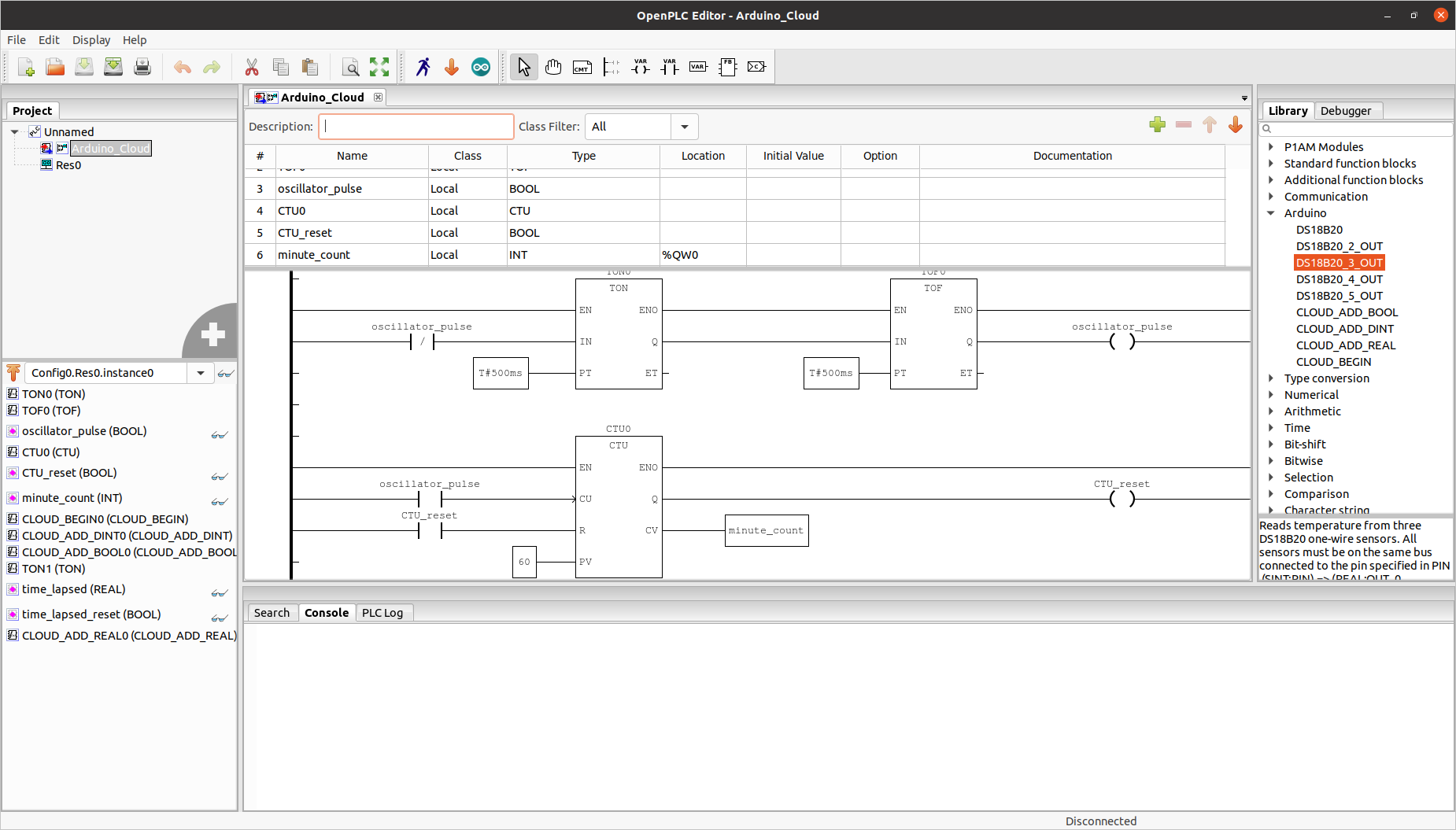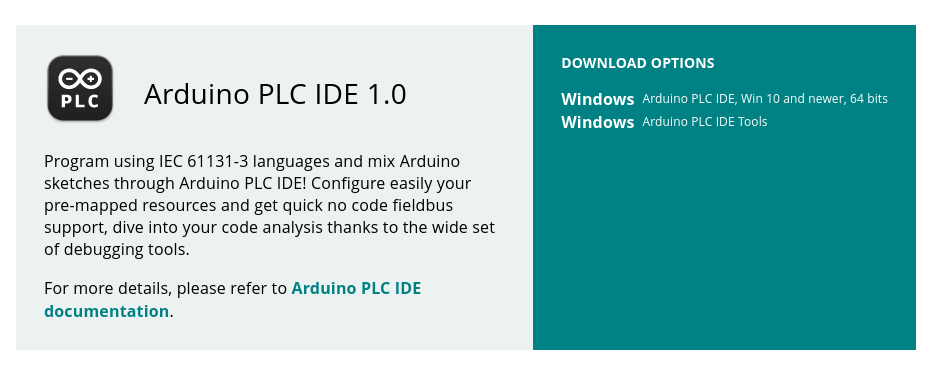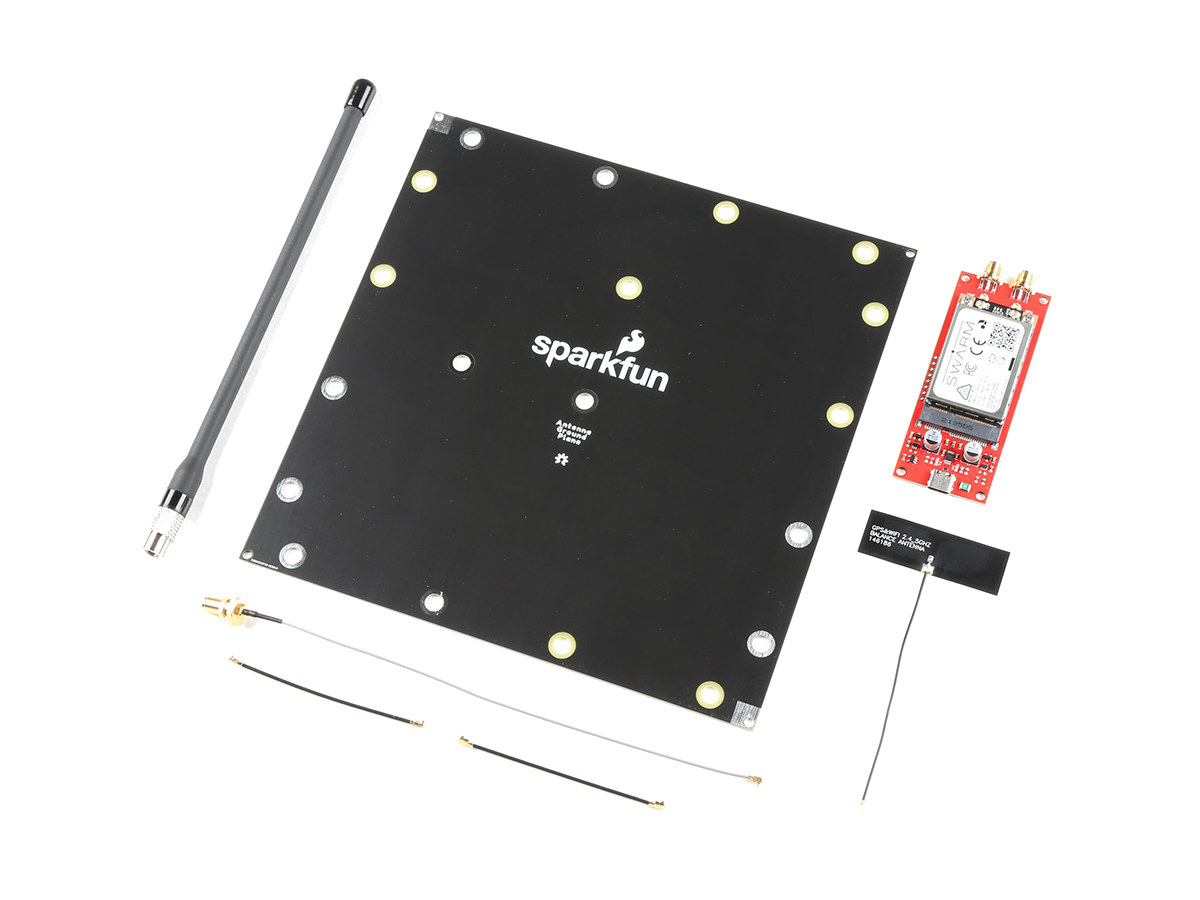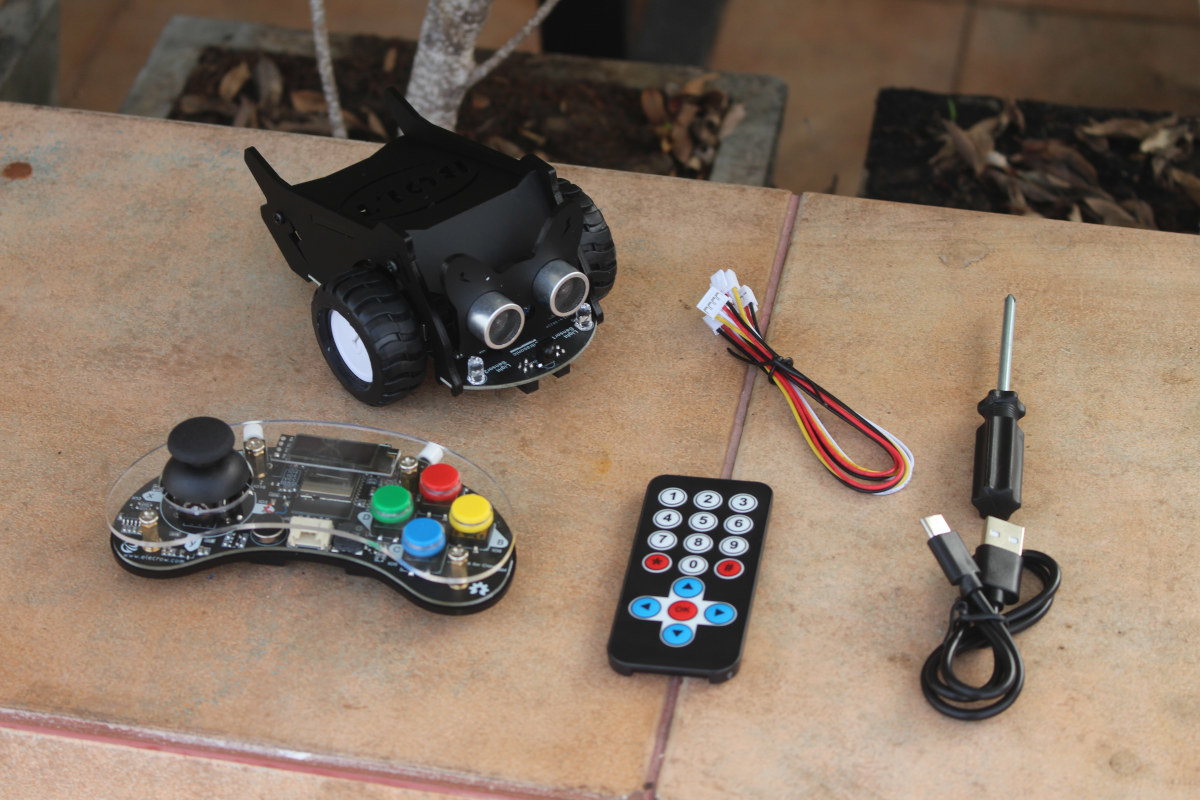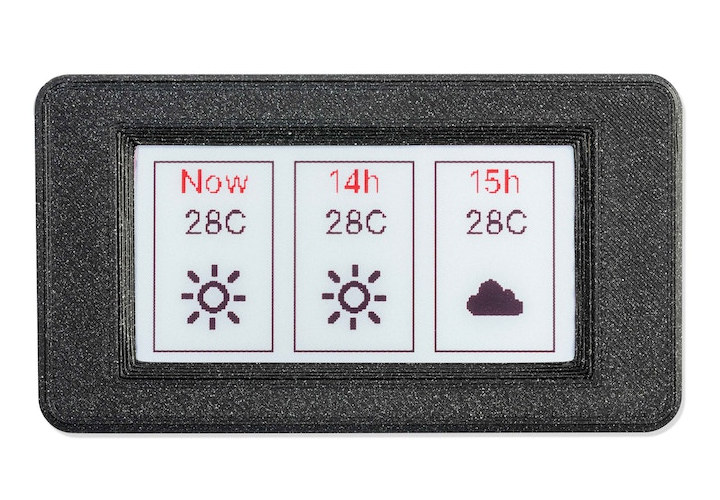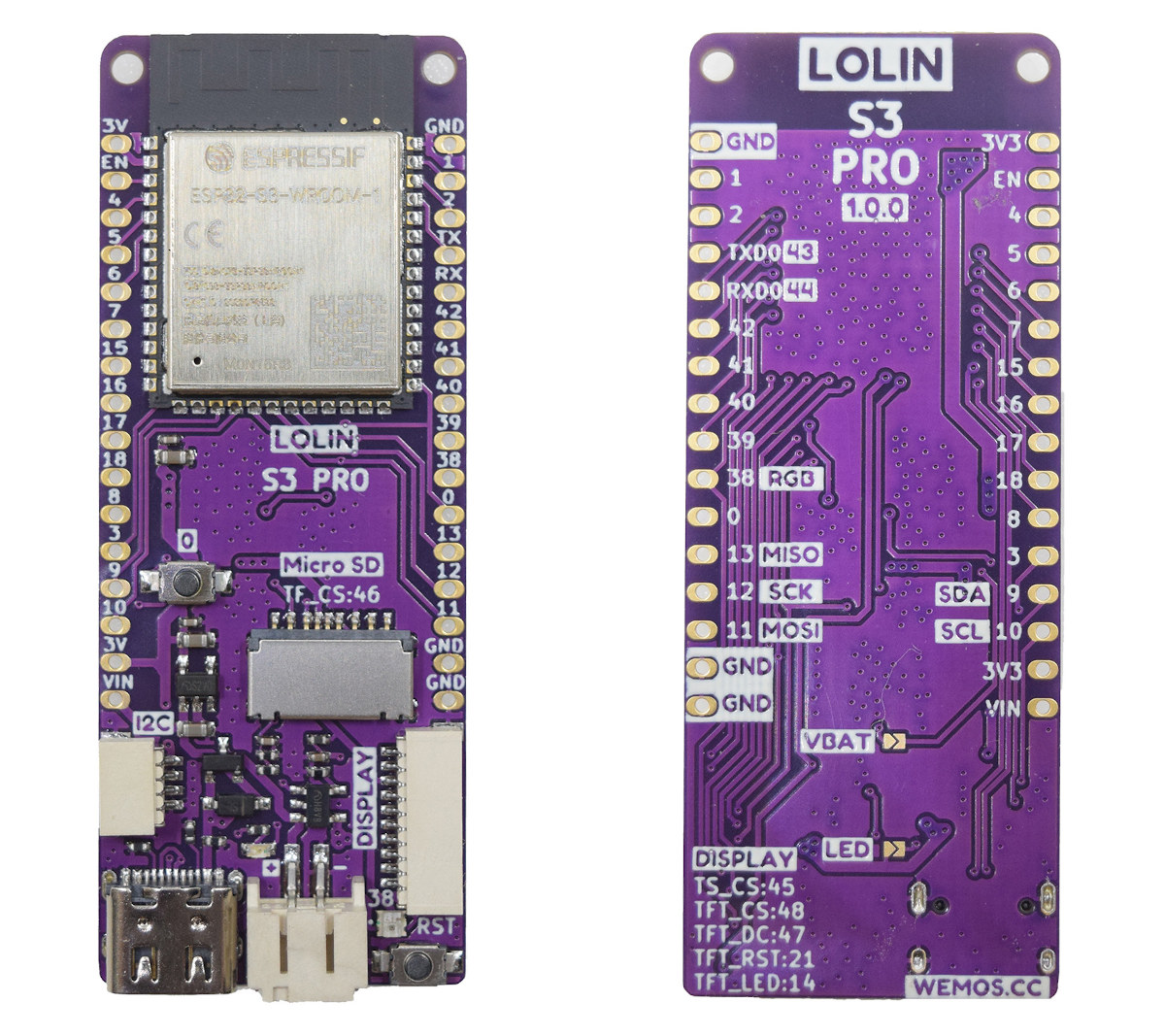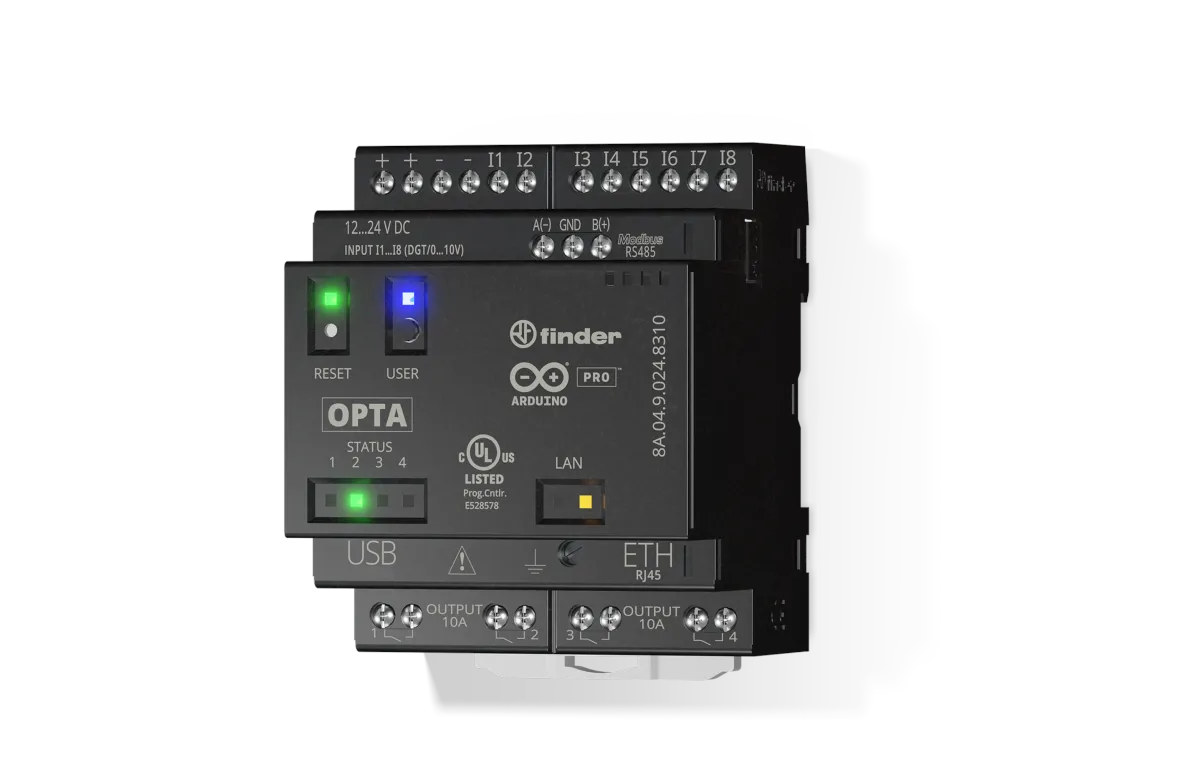OpenPLC is an open-source, free-to-use Programmable Logic Controller Suite, compliant with the IEC 61131-3 standard, and working with a range of hardware platforms such as Arduino, ESP8266/ESP32, Raspberry Pi SBCs, as well as Windows and Linux machines. When Arduino unveiled the Arduino PLC IDE, we noted the languages defined by the IEC 61131-3 standard were licensed, and the PLC key for the Portenta Machine Control unit sold for $17.60. One reader complained about the high license cost per device, but Massimo Banzi, the co-founder of the Arduino project, replied it was cost-effective for smaller deployments: Actually it’s not that much money compared to the cost of other PLC software (thousands of dollars per seat!). This model helps small companies with not that many devices.. It’s possible to negotiate bulk licenses for companies. But there’s also another option with OpenPLC open-source PLC suite that does not require any license fee. That’s […]
Arduino PLC IDE released for the Portenta Machine Control unit, and soon Opta micro PLC
The newly released Arduino PLC IDE supports the five languages defined by the IEC 61131-3 standard: Ladder Diagram, Functional Block Diagram, Structured Text, Sequential Function Chart, and Instruction List. With Arduino focusing more and more on the industrial side with its Arduino Pro family, the company unveiled the Arduino Opta Micro PLC for industrial application last month and said it could be programmed with traditional PLC languages such as Ladder and FCB as well as the Arduino 2.0.0 IDE. The company now seems to have created an all-in-one integrated development environment for such hardware with the Arduino PLC IDE supporting PLC languages with Arduino Sketches. The program now supports the Portenta Machine Control unit, but the upcoming Opta micro PLC will be added soon. The IDE integrates no-code Fieldbus configurators that allow users to manage CanOpen, Modbus RTU, and Modbus TCP communication easily, and Arduino also mentions “advanced monitoring and […]
$200 Swarm M138 kit enables two-way satellite connectivity for IoT projects
Sparkfun has launched a Satellite Transceiver Kit based on the Swarm M138 satellite and GNSS modem that allows low-bitrate two-way connectivity for IoT projects anywhere on earth. Remote IoT applications have benefited from LPWAN standards such as LoRaWAN and NB-IoT, but in some extreme cases coverage may still be challenging, so satellite communication may be the only practical option. It used to be really expensive, but Swarm makes this more affordable, and companies like SigFox and Semtech also have (or had?) plans to use low-earth orbit satellites for their respective LPWAN technologies. Swarm M138 kit content and specifications: Swarm M138 mini PCIe satellite modem and GNSS receiver module MCU – Arm Cortex-M4 microcontroller Up to 1 Kbps data rate, up to 912 bytes packet size Frequency 137-138 MHz (downlink) 148-150 MHz (uplink) Dimensions – 51.0 x 30.0 x 5.3 mm Weight – 9.6 grams Temperature Range – -40°C to +85°C […]
Getting Started with CrowBot BOLT smart robot car
CrowBot BOLT is a smart robot car based on an ESP32 wireless microcontroller and designed for the education market with the ability to program the robot with visual programming, Arduino, or MicroPython. Elecrow sent me a sample of the CrowBot BOLT kit for evaluation so I’ll have a look at the hardware, show how to assemble it, showcase the features of the built-in firmware, and demonstrate how to program the robot with visual programming, Arduino, and MicroPython using some of the provided code samples. CrowBot BOLT unboxing The package lists some of the highlights with 16 teaching courses, support for multiple programming platforms, scalability with Grove connectors, and the inclusion of the Joystick that’s also programmable. The CrowBot BOLT comes as a kit so there will need to be some work to do to assemble the robot, but no soldering is required (in normal cases, more on that later). The […]
Inkplate 2 is a 2.13-inch WiFi ePaper display programmable with Arduino or MicroPython (Crowdfunding)
Inkplate 2 wireless ePaper display is by far the smallest display from Soldered Electronics with a 2.13-inch 3-color ePaper display while previous Inkplate models rely on 6-inch to 9.7-inch ePaper displays. The tiny display board integrates an ESP32 dual-core wireless microcontroller that drives the display, provides WiFi and Bluetooth connectivity plus some I/Os, and can be programmed with the Arduino IDE or MicroPython. Inkplate 2 specifications: Wireless module – ESP32-WROVER-E module with ESP32 dual-core microcontroller with Wi-Fi 4 & Bluetooth 4.0 connectivity, 8MB PSRAM, 4MB flash (Note: The product’s description lists 8MB flash, and 4MB RAM, but there’s no ESP32-WROVER-E in this configuration) Antenna- External IPX antenna Display – 2.13-inch ePaper display with 212×104 resolution (111 DPI) Red, black, and white colors 15 seconds full refresh time (no partial update) USB – 1x USB Type-C port for power and programming via CH340 USB to TLL chip Expansion 20-pin header with […]
LOLIN S3 Pro ESP32-S3 board offers display port, MicroSD card slot
LOLIN S3 Pro is a WiFi & Bluetooth LE IoT board built around the ESP32-S3-WROOM-1 modules with various I/Os including a display port, a microSD card slot, and a LOLIN I2C connector. The wireless module ships with 16MB QSPI flash and 8MB PSRAM, and the board also features two 16-pin headers with ADC, DAC, I2C, SPI, UART, etc…, a USB Type-C port, and support for a LiPo batteries with 500mA charging. LOLIN S3 Pro specifications: Wireless module – ESP32-S3-WROOM-1 module with: Espressif Systems ESP32-S3 dual-core Tensilica LX7 @ up to 240 MHz with vector instructions for AI acceleration, 512KB RAM, 2.4 GHz WiFi 4 and Bluetooth 5.0 LE with support for long-range, up to 2Mbps data rate, mesh networking 16MB QSPI flash 8MB PSRAM PCB antenna Storage – MicroSD card socket Display I/F – Display port for “TFT and EPD” displays USB – 1x USB Type-C port Expansion 2x […]
International Black Friday 2022 deals and coupons
We’ve been writing about international Black Friday and Cyber Monday deals and coupons since 2014, since US-centric promotions such as Amazon Black Friday deals are not always suitable to the diverse, international audience of CNX Software. Let’s check out Black Friday 2022 international deals from specific manufacturers as well as events from Aliexpress, Banggood, and other stores. Arduino Black Friday sales Arduino’s Black Friday Sales event offers new and legacy boards at a 20% to 25% discount, as well as a discount for one certification bundle. The number of items on sale is limited, as at the time of writing there were only 11. While the screenshot above shows prices in USD, the Black Friday event is also taking on the EMEA website. Aliexpress SuperDeals Aliexpress will usually organize a “Global Shopping Festival” event for Black Friday with coupons, deals, and lucky draws, but this year the event page is […]
Arduino Opta is a micro PLC for industrial IoT applications
Arduino has recently announced the Opta micro PLC with industrial IoT capabilities adding yet another solution to the Arduino Pro family. Arduino used to focus on the hobbyist crowd, but with the launch of the Arduino Pro family in 2020 starting with the Portenta H7 board, the company switched its main focus to the more profitable enterprise market. Since then they’ve launched several other boards designed in-house, and last year started collaborating with the introduction of the Arduino WisGate Edge LoRaWAN gateways based on RAKwireless hardware. The Arduino Opta is another one of those collaborations as it was designed together with Finder, who calls their devices PLR (Programmable Logic Relays). Arduino Opta key features and specifications: MCU – STMicroelectronics STM32H747XI microcontroller with 1x Arm Cortex-M7 core up to 480 MHz, 1x Arm Cortex-M4 core up to 240 MHz, 2MB flash, 1MB SRAM (as found in all Portenta H7 boards, and […]


